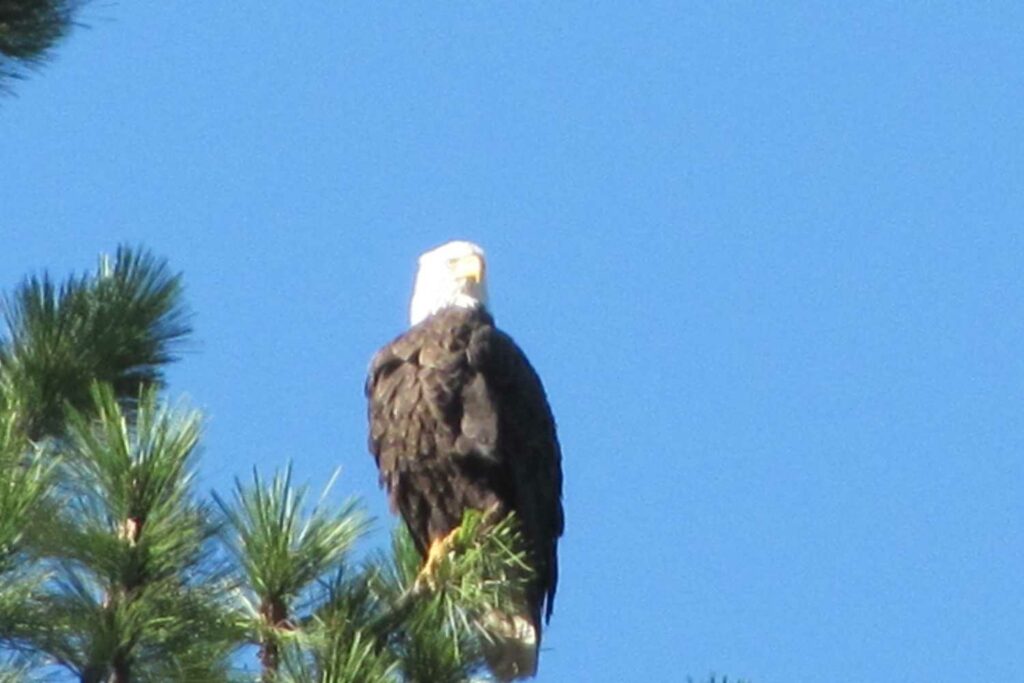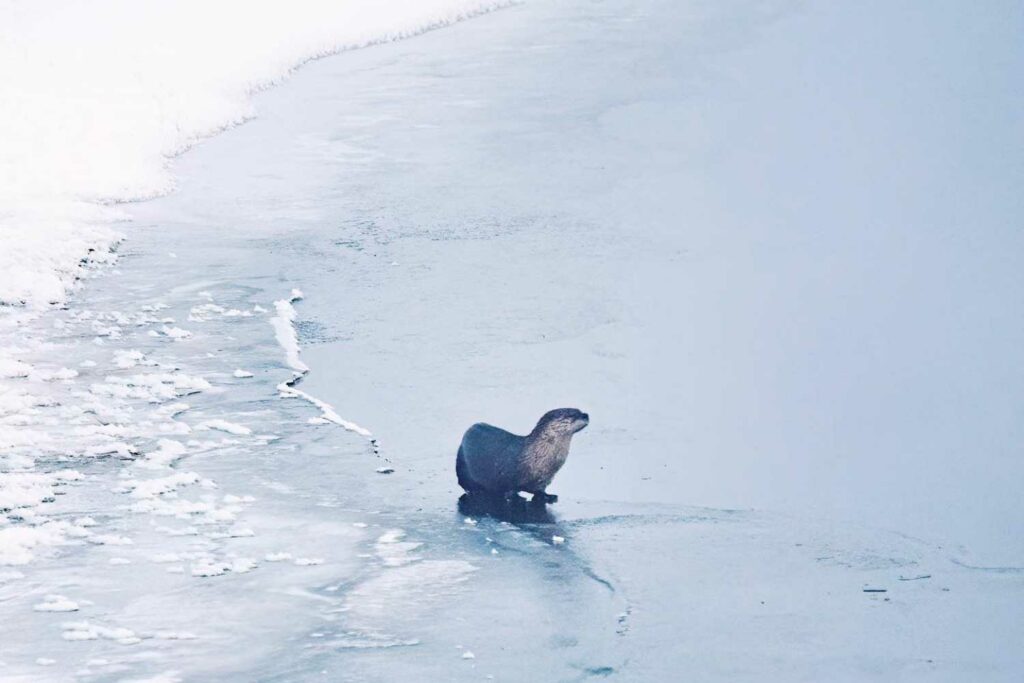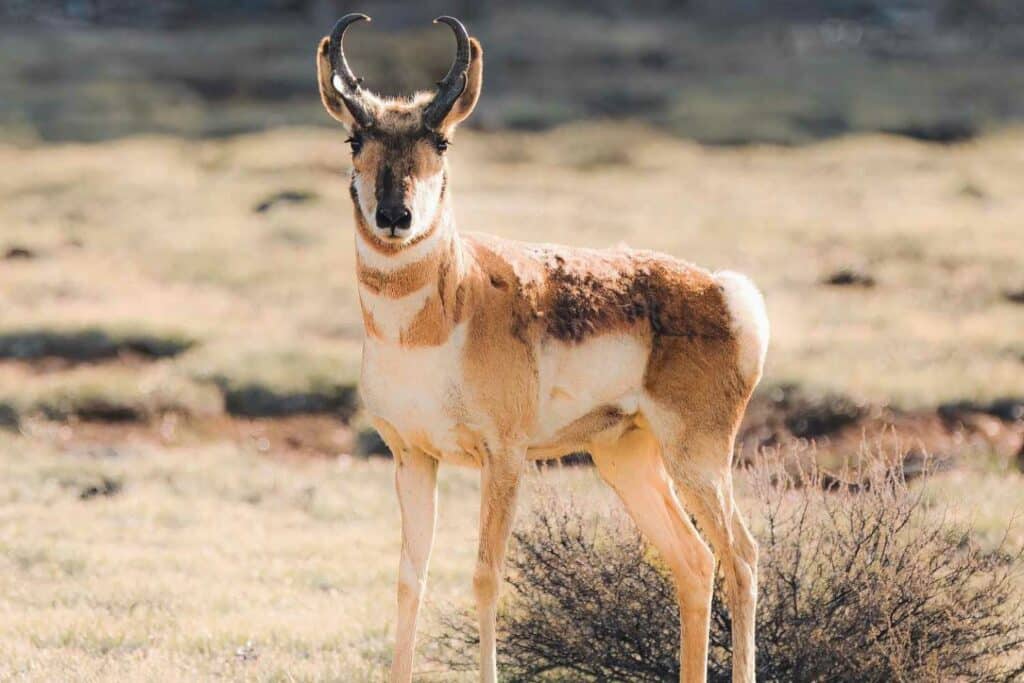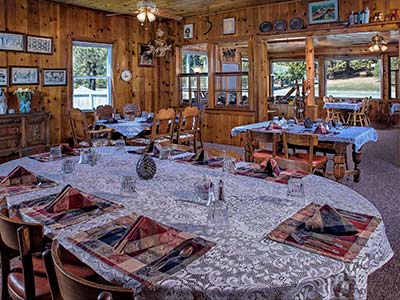Our Favorite Spots for Wildlife Viewing
The diverse terrain and unspoiled landscapes of Plumas County make it an ideal place to view Northern California’s rich array of wildlife. During your time in the region, you can easily find and observe deer, bald eagles, and numerous waterfowl. More trained observers can also hope to spot black bears, bobcats, mountain lions, and members of the Lassen Wolf Pack. Remember that the best times to view wildlife are dawn or dusk. Viewing wild creatures in their natural habitat is both a privilege and a thrill, so remember to keep your distance and move quietly and carefully.
And most importantly, don’t forget to bring your binoculars and camera. They will help you get incredible views while maintaining a safe and respectful distance. Here are our favorite spots to view wildlife in Plumas County.
Lassen Volcanic National Park
Lassen Volcanic National Park is home to over 300 species of birds, mammals, reptiles, amphibians, and fish. The park’s diverse landscape is divided into below and above 7,800 feet. Below the fir and pine forests of the park’s dense 7,800-foot level, you’ll find black bears, mule deer, mountain chickadee, white-headed woodpeckers, long-toed salamanders, and a wide variety of bat species. Above the 7,800-foot level, an area sparsely covered in lovely mountain hemlock, you’ll find Clark’s nutcracker, deer, mice, and many different species of the chipmunk. In other parts of the park, you can hope to discover unique creatures like the dark-eyed junco, montane vole, sagebrush lizard, and pika. The Pacific tree frog, western terrestrial garter snake, common snipe, and mountain pocket gopher are in the wet meadows along the edges of the park’s lakes and streams. Also, look for finches and ground squirrels throughout the park.
Lassen Volcanic Park is also one of the best places in the region to sight a bald eagle, which is classified as threatened under the Endangered Species Act. The peregrine falcon, removed from the endangered species list in 1999, also spends time in the park.
One of the park’s most distinct and beautiful species is the California Tortoiseshell Butterfly. These exquisite orange-brown creatures can be seen in the thousands, often at the top of peaks where wind currents have carried them. It is a remarkable sight, but remember to be careful during these mass migrations, as they can make for hazardous driving conditions.
St. Bernard Lodge

While St. Bernard Lodge may not be a designated wildlife viewing area, it does not mean we are short on wildlife. Bald Eagles, Osprey, and Blue Herons frequent our ponds and can often be seen from the upstairs windows. Guests have also spotted Stellar Jays, Woodpeckers, Mallards, Wild Turkeys, Quail, Swallows, Blackbirds, and Canadian Geese in the spring and fall. Deer, squirrels, muskrats, and river otters are common—occasional bears in the summer and coyotes in winter.
Lake Almanor

Lake Almanor has several spots for watching wildlife; the two best are the Lake Almanor Recreation Trail along the west shore of Lake Almanor and the Olsen Barn and Causeway area at the north end of the lake. The north end of the lake is nesting grounds for Grebes. Bald Eagles and Osprey are often spotted when driving across the causeway.
Several times, a wolf from the Lassen Wolf pack has been spotted near Olsen Barn, and deer are often seen.
Antelope Lake/Indian Creek
The Antelope Lake-Indian Creek Wildlife Viewing site is part of the Watchable Wildlife national viewing site network. You will know the site from the brown road sign with a white binoculars symbol. Antelope Lake’s elevation is 5,000 feet in the Plumas National Forest and encompasses 15 miles of timbered shoreline. The lake’s many protected coves and meadowlands attract a variety of waterfowl from April through November, including nesting mallards, warblers, great blue herons, cinnamon teal, gadwalls, and common mergansers. Sandpipers, Canadian geese, and herons nest on the many islands that dot the lake. The Antelope Lake/Indian Creek area is also home to black bears, ospreys, beavers, and bald eagles. Antelope Lake is a beautiful 45-minute drive from St. Bernard Lodge. We recommend taking the Indian Valley Arm Road from Greenville to Taylorsville and continuing to Antelope Lake. You will pass by many Barn Quilts and ranchland. A stop at Youngs Market in Taylorsville is always fun. Grab a great sandwich and some snacks for a picnic at Antelope Lake. Stop in at the Heart K Ranch; this is an excellent area to hike and watch for wildlife.
Bizz Johnson Trail/Susan River

The Bizz Johnson Interpretive Trail follows the path of the Southern Pacific Railroad’s Fernley and Lassen Branch line, which was put in at the request of the Red River Lumber Company in 1914. The trail is 25.4 miles long and has six different trailheads to choose a starting point, 12 miles of the trail are along the side of the Susan River. This trail is ranked a premium Watchable Wildlife Viewing area. The trail takes you through three bioregions; Sierra Nevada, Cascade Range, and the Great Basin Desert. Besides the variety of wildlife spotted on the trail, there are 32 historical or geologic interest points. Before heading out on the trail, pick up a guide at St. Bernard Lodge. The trail is open to visit by foot, bicycle, or horseback. Wildlife often spotted include beaver, muskrats, deer, bats, raccoons, porcupines, and coyotes. Various birds can also be seen, including Belted Kingfishers, American Kestrels, hooded orioles, calliope hummingbirds, great horned owls, red-tail hawks, and other birds of prey.
Eagle Lake
Eagle Lake is ranked a regional wildlife viewing site. Deer and Antelope can be spotted from different trails along the lake. Eagle Lake is the second largest lake entirely in California and is famous for its unique Eagle Lake Trout. Eagle Lake is a unique closed basin hydrology. A small interpretive kiosk near the Pine Creek Fish Trap explains the uniqueness of both Eagle Lake and Eagle Lake Trout. During March and April, there is an opportunity to see Eagle Lake Trout swimming upstream to spawn in Pine Creek. If you wish to view this and the fish trap operation, call ahead to Fish & Game ( 530-254-6363) to check their availability and schedule. The Osprey Trail at the SE side of the lake is great for viewing Osprey and their nests. Other birds found near Eagle Lake include White Pelicans, Great Blue Herons, Cormorants, Grebes, Buffleheads, Egrets, a variety of diving ducks, and Bald Eagles.
McArthur Burney State Park
McArthur Burney State Park is most famous for Burney Falls, a 129-foot waterfall with over a million gallons of water pouring over year-round. It is also a regional wildlife viewing area. Black swifts and swallows can be found near the waterfall. Blue herons, Bald eagles, mallards and ruddy ducks, Double-crested cormorants, and pied-billed grebes can be found near Lake Britton in the park. In the forest area of the park, it is common to see owls and woodpeckers. Coyotes, gray foxes, Mule deer, Northern River Otter, and porcupines are relatively common. Occasionally, Rocky Mountain Elk can be spotted. This is one of the few herds of Rocky Mountain Elk in California. They have the largest antlers of all subspecies of Elk. Burney Falls is a two-hour drive from St. Bernard Lodge. We strongly suggest making it a stop on the way to or from St. Bernard Lodge. Guests staying with us for several days make a day trip to Burney Falls, which never fails to impress.
Lake Davis Wildlife Viewing Site
Lake Davis is also part of the Watchable Wildlife network. The lake’s meadows and pine forests are home to Canadian geese, tundra swans, pelicans, bald eagles, and ospreys, best viewed in the spring or fall. The site is a popular bird-watching destination. You might also find deer, bats, black bears, coyotes, foxes, rabbits, squirrels, and the occasional mountain lion. Hike the 7-mile Lake Davis Trail for a great way to exercise while viewing the incredible flora and fauna surrounding the lake.
Be sure to download the Northern Plumas County guide to birding and visit the Plumas County website for more information about the other wildlife viewing sites in the region.
Planning a wildlife adventure through Plumas County? Book a stay at the historic St. Bernard Lodge near Lassen Volcanic Park and Lake Almanor.



